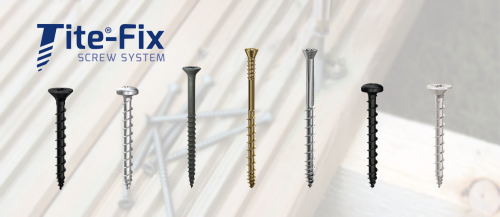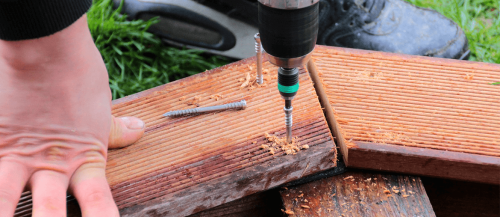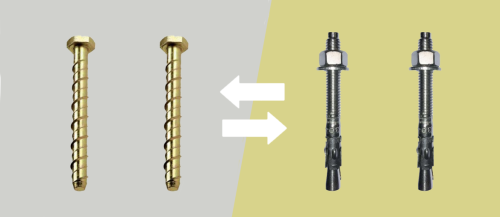This site uses cookies to help deliver its services and analyse traffic.
What are Restraint Straps?
In the world of DIY and construction, safety is always at the top of the priority list. Whether you are a professional or a passionate at-home DIYer, ensuring the structural stability of your project is paramount. In this blog post, we are going to explore restraint straps, uncovering their purpose, benefits, and how they are used in many different building projects.
What are Restraint Straps?
Restraint straps, also known as bat straps or tension straps, are flexible metal connectors which provide security and stability in various construction applications. They are typically manufactured out of galvanised steel or stainless steel, which both offer superior durability and corrosion resistance, making them suitable for a range of environments. They are specifically designed to resist high-tension forces, preventing structural failure such as bowing or cracking of walls. Restraint straps are a crucial component in reinforcing buildings, ensuring the longevity of timber structures and other load-bearing elements. They are most commonly used in situations where the risk of structural instability or failure is high.
How Do They Work?
Restraint straps work by preventing lateral or vertical movement of building components. They are typically used to support and strengthen connections between timber frames, joists, trusses, and floors, to effectively distribute loads where there might be more pressure from external elements.
Here at BS Fixings, we have a selection of light-duty and heavy-duty restraint straps available to purchase on our website. We stock two different types, angled restraint straps and twisted restraint straps, which are both available in light and heavy-duty options. Generally, heavy-duty straps are used for lateral loads, securing masonry walls to roof trusses and joists. Whereas light-duty straps are employed for vertical loads, such as holding down wall plates to masonry. All of our restraint straps are designed in accordance with The Buildings Regulations, BS5268 Part 3, which includes requirements for restraint straps on floors and roofs to improve building safety. By incorporating these straps into your construction projects, you can ensure compliance with safety standards and regulations, providing peace of mind and safeguarding against potential liabilities.
To view The Buildings Regulations, click here.
How to Install Restraint Straps
If you have never installed restraint straps before, you are in luck as they are designed to be user-friendly. Restraint straps are incredibly easy to install, and often feature pre-punched holes or nail slots to ensure you can attach nails, screws, and bolts with ease. All of the straps we stock have a multi-holed design, which allows for a flexible installation. Pre-punched holes mean you can place your strap in a precise location where optimal support can be achieved.
When installing the straps, you must ensure that all the restraints are fitted tightly against the face of the masonry wall and should be turned down at least 100mm for a secure outcome.
Popular Uses of Restraint Straps
Restraint straps find widespread use across various construction projects. Here are some popular applications where these straps shine:
- Timber Construction: restraint straps excel in timber construction projects, reinforcing connections between timber beams, joists, and walls. By securing these elements, restraint straps prevent lateral movement and enhance the structural stability of timber structures.
- Roofing: roofing projects demand reliable connections to ensure resistance against wind uplift. Restraint straps play a crucial role in securing roof trusses, rafters, and purlins, preventing roof collapse and increasing overall safety.
- Brickwork Reinforcement: when constructing brick walls, restraint straps can be used to tie the brickwork to the underlying structure, reinforcing its stability and preventing displacement or failure.
- Furniture Assembly: even in the realm of DIY furniture assembly, restraint straps can be useful fixings. They can be used to reinforce joints and secure heavy pieces of material together, preventing wobbling and increasing stability.
Please feel free to browse or shop from our selection of restraint straps on our website today or if you require further information about our online catalogue, don’t hesitate to contact us – we are always happy to help!
Latest from BS Fixings
Banish the Grime in a Swipe: New UltraGrime Pro Multi-Use Clothwipes!
At BS Fixings, we understand that when you’re knee-deep in your trade, the last thing you want to worry about is the mess. That’s why we’re excited to introduce a...
Continue readingIntroducing Tite®-Fix at BS Fixings
BS Fixings is proud to introduce yet another brand to our lineup - Tite®-Fix! This brand offers a range of high-quality screws designed for various applications, from tongue & groove...
Continue readingNew In! Rawlplug’s R-KEM2 Polyester Styrene-Free Resin
We're pleased to share something special with you – the Rawlplug R-KEM2 Polyester Styrene-Free Resin 300ml has just landed at BS Fixings! This ingenious resin is designed for use in...
Continue readingWhich Types of Screw are Best for Outdoor Use?
At BS Fixings, we understand the challenges posed by the great outdoors, especially when it comes to decking, fencing, installing outdoor ironmongery or even assembling garden furniture. That’s why we...
Continue readingHow Do I Choose the Right Size Drill Bit for a Wall Plug?
In this blog, we’re going to tackle another common question we hear in our community – how do I choose the right size drill bit for a wall plug? Choosing...
Continue readingWhat’s the Difference Between an Anchor Bolt and a Through Bolt?
When it comes to securing anything from the lightest of fixtures to the heftiest of machinery, the importance of choosing the right bolt cannot be overlooked. It’s the kind of...
Continue reading





